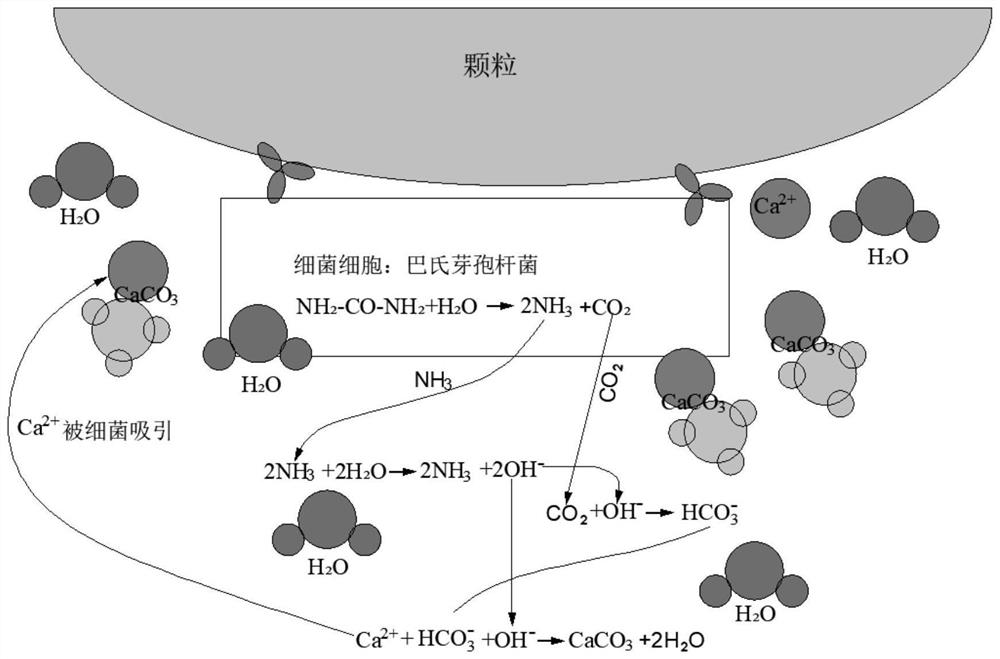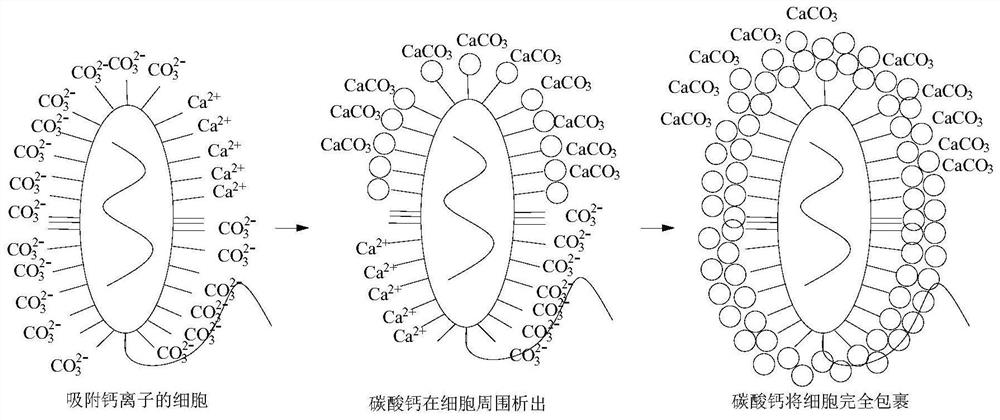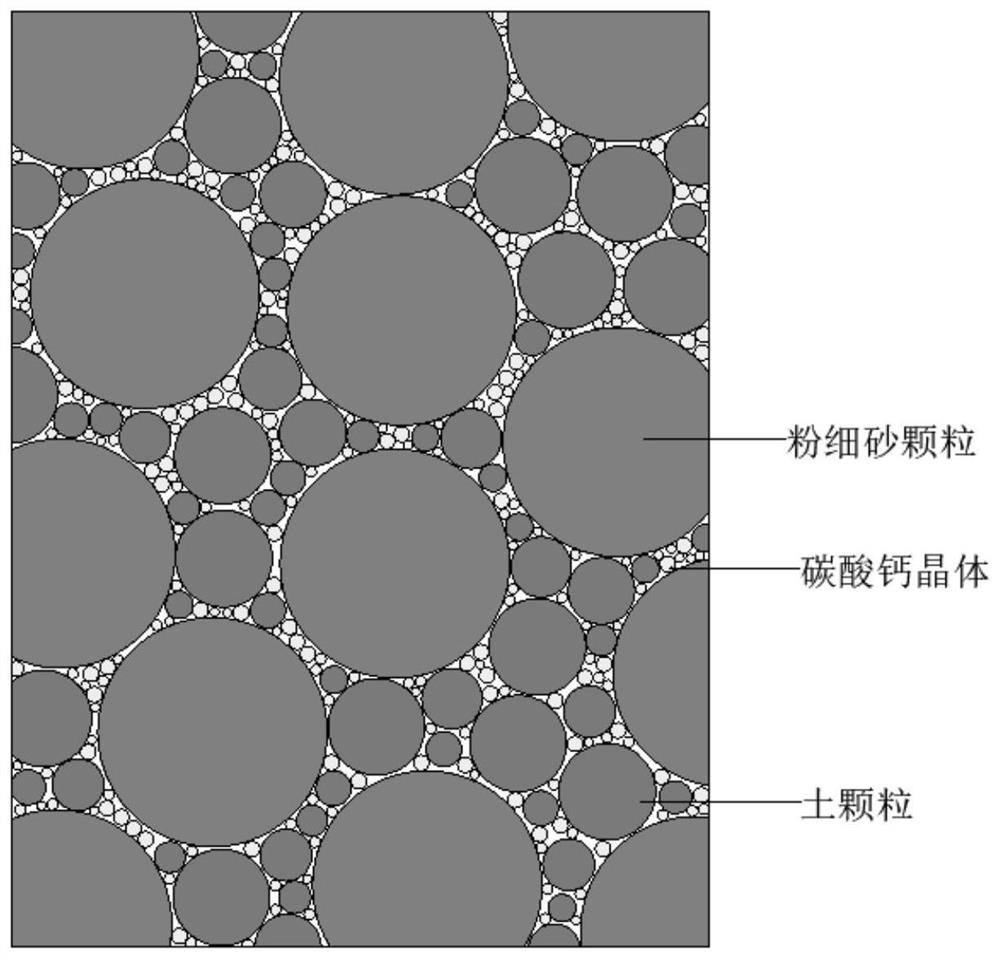Microorganism induction silty-fine sand consolidating soft soil roadbed ecological improvement method
A technology of soft soil roadbed and silty sand, applied in the direction of microorganism-based methods, biochemical equipment and methods, microorganisms, etc., can solve problems such as high energy consumption, high construction costs in built-up areas, damage, etc., to reduce environmental pollution and Energy consumption, the effect of overcoming high pollution
- Summary
- Abstract
- Description
- Claims
- Application Information
AI Technical Summary
Problems solved by technology
Method used
Image
Examples
Embodiment Construction
[0026] Below by embodiment, in conjunction with accompanying drawing, the technical scheme of the present invention is described further specifically, as figure 1 , figure 2 As shown, it is a schematic diagram of the microstructure of the microorganism-induced calcium carbonate consolidation and precipitation technology used in the present invention, including that Bacillus pasteurian uses urea as an energy source, produces a large amount of highly active urease through metabolic activities, and hydrolyzes urea to generate NH 4 + and CO 3 2- , and then pour calcium salt solution into the soil to provide calcium ions. Due to the special cell wall structure of microorganisms, their surface generally has a large amount of negative ions, and life activities will convert CO 3 2- Transported to the cell surface and Ca 2+ Combined to form calcium carbonate crystals, the reaction equation is as follows:
[0027] NH 2 -CO-NH 2 +3H 2 O→2NH 4 + +CO 3 2-
[0028]
[0029...
PUM
 Login to View More
Login to View More Abstract
Description
Claims
Application Information
 Login to View More
Login to View More - R&D
- Intellectual Property
- Life Sciences
- Materials
- Tech Scout
- Unparalleled Data Quality
- Higher Quality Content
- 60% Fewer Hallucinations
Browse by: Latest US Patents, China's latest patents, Technical Efficacy Thesaurus, Application Domain, Technology Topic, Popular Technical Reports.
© 2025 PatSnap. All rights reserved.Legal|Privacy policy|Modern Slavery Act Transparency Statement|Sitemap|About US| Contact US: help@patsnap.com



